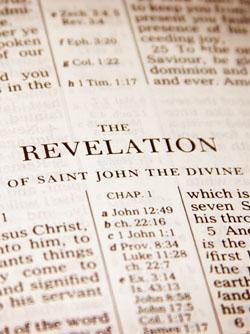Into the Storm!
My father was always fascinated by storms. News of one approaching would draw him to our small front porch, where he would stand, watching it build along the horizon. As a child, I would join him at times, staring into the dark clouds in the distance—seeing them move, swirl, and gather as they darkened further still, and wondering what they held in store as they drew closer to our home.
Our world is home to many kinds of storms, from rainstorms that feed our crops and thunderstorms that rattle our windows, to devastating tornados and hurricanes or cyclones, with the power to reduce even our largest cities to rubble and destroy thousands of lives.
Can these awesome phenomena teach us anything? For all the potential damage and devastation they may wreak upon our populations and the cities we’ve constructed, can they serve any purpose for us today?
As with every part of the Creation in which we live, the storms that surround us can most certainly teach us. For while we have yet to master the storm, the storm does, indeed, have a Master. And it is, like us, among the works of His hands.
The Wondrous and Dangerous Power of Storms
Witnessing the majesty and power on display in storms from a safe distance away can be an inspiring sight. Even seemingly more “common” phenomena, such as simple evening thunderstorms, with lightning arcing across the sky and curtains of water dropping from the skies, can move the spirit and generate a sense of wonder.
But for those who have experienced the pain and suffering that storms can bring, the power of such weather systems is felt on a deeper level. My family and I have taken refuge in our basement when news of a local tornado was broadcast on the news, and many of our friends were personally impacted by the deadly tornado that laid waste to portions of Joplin, Missouri in 2011. Growing to three-quarters of a mile wide (more than one kilometer) and slowly traveling 13 miles (21 kilometers) along the ground, by the time it was done the twister had turned portions of Joplin into a wasteland and had killed 161 people.
Yet, as fearsome as that event was, it hardly represents an upper limit to the destructive power of storms. Consider hurricanes.
Called by different names that indicate the region in which they develop, hurricanes, typhoons and cyclones are among the most powerful and destructive forces unleashed on planet Earth. The great Bhola cyclone of 1970 absolutely devastated the area around present-day Bangladesh, taking the lives of as many as 500,000 people in a single day in November.
Modern satellite imagery gives us the opportunity to view such storms from high above the surface of the earth, and it is almost impossible not to be moved by the size and scale of these oceanic monsters—averaging around 100 miles (161 kilometers) across. However, their colossal size does not fully reveal the power such storms represent.
Power Beyond Imagination
Reflect on the devastation wreaked upon the Japanese city of Hiroshima near the conclusion of World War II by the dropping of the world’s first atomic bomb to be used in battle. The bomb was called “Little Boy,” and its single explosion utterly devastated Hiroshima, killing multiple tens of thousands and destroying around 60,000 buildings instantly. It was a moment in which mankind demonstrated—in a terrifyingly lethal manner—that he had begun to tap into new sources of power, previously inaccessible to humanity.
Yet such power is virtually nothing compared to that of the hurricane. Consider this summary by The Globe and Mail:
Taken over the entire cloud shield of an “average” hurricane, the energy released daily in the form of rain and wind is the equivalent of about 13,000 megatons—almost equal to the destructive potential of all the weapons in the Cold War missile silos in the United States and the former Soviet Union. That’s a million Hiroshima bombs exploded at a rate of more than 10 a second—20 Little Boys for each of the 50,000 (estimated) cities on the planet (“The 13,000-megaton storm,” September 3, 2005).
While humanity often considers itself the master of the planet, such storms are a fearsome reminder that we are most certainly not.
But for all of their sheer power and destructive might and the awe they can inspire among those forced to share the planet with them, the greatest purpose they serve is to point to One who is greater than them all.
In Scripture, God associates Himself with storms and whirlwinds on a number of occasions, using their force and power as reflections of His own. When He speaks to Job, for instance, desiring to help the suffering patriarch to better comprehend the extent of His majesty, He chooses to speak to Job “out of the whirlwind” (Job 38:1). And when He appears to the prophet Ezekiel in a vision, He approaches the seer as a storm of fire coming from the north (Ezekiel 1:4).
Similarly, God frequently pictures His wrath coming upon sinning nations as a terrifying tempest, such as the “destroying storm” of Isaiah 28:2.
The God of Creation is Lord of the Storm
But perhaps the most fitting connection between the power of the storm in the created world and the Creator of that world was made during the ministry of Jesus, almost 2,000 years ago.
He and His disciples were together in a boat in the middle of the Sea of Galilee. While the disciples were working to cross to the other side of the sea, Jesus was asleep in the stern, taking a well-deserved nap after teaching the multitudes along the shore.
While He was sleeping, a powerful windstorm arose on the sea, such that the waves were crashing into the boat, which was beginning to fill with water. Though many of the disciples were experienced boatmen, they began to fear and panic as they saw that the storm might sink their boat and kill them all, and they awoke their Master, who was sleeping through it all, and cried to Him, “Teacher, do You not care that we are perishing?” (Mark 4:38).
The Bible records what happened next very simply: “Then He arose and rebuked the wind, and said to the sea, ‘Peace, be still!’ And the wind ceased and there was a great calm” (v. 39). With only three words, Jesus Christ had commanded the Creation—and the Creation obeyed! The disciples said to each other, “Who can this be, that even the wind and the sea obey Him!” (v. 41).
They can be marvels to behold, and they can be fearsome to experience. They can inspire us with their scope and power, and they can cause us to flee before the devastation they bring. Storms—the hurricane, the tornado, the cyclone, the thunderstorm—remind us that we do not live in a world of our own creation, and they humble us before their might.
But even the storm is humbled before its own Creator and must yield to His will. So, too, must we.






